- 翰林提供学术活动、国际课程、科研项目一站式留学背景提升服务!
- 400 888 0080
AQA A Level Physics复习笔记8.1.7 Required Practical: Inverse Square-Law for Gamma Radiation
Required Practical: Inverse Square-Law for Gamma Radiation
Aim of the Experiment
The aim of this experiment is to verify the inverse square law for gamma radiation of a known gamma-emitting source
Variables
- Independent variable = the count rate / activity of the source, C
- Dependent variable = the distance between the source and detector, x (m)
- Control variables
- The time interval of each measurement
- The same thickness of aluminium foil
- The same gamma source
Equipment List
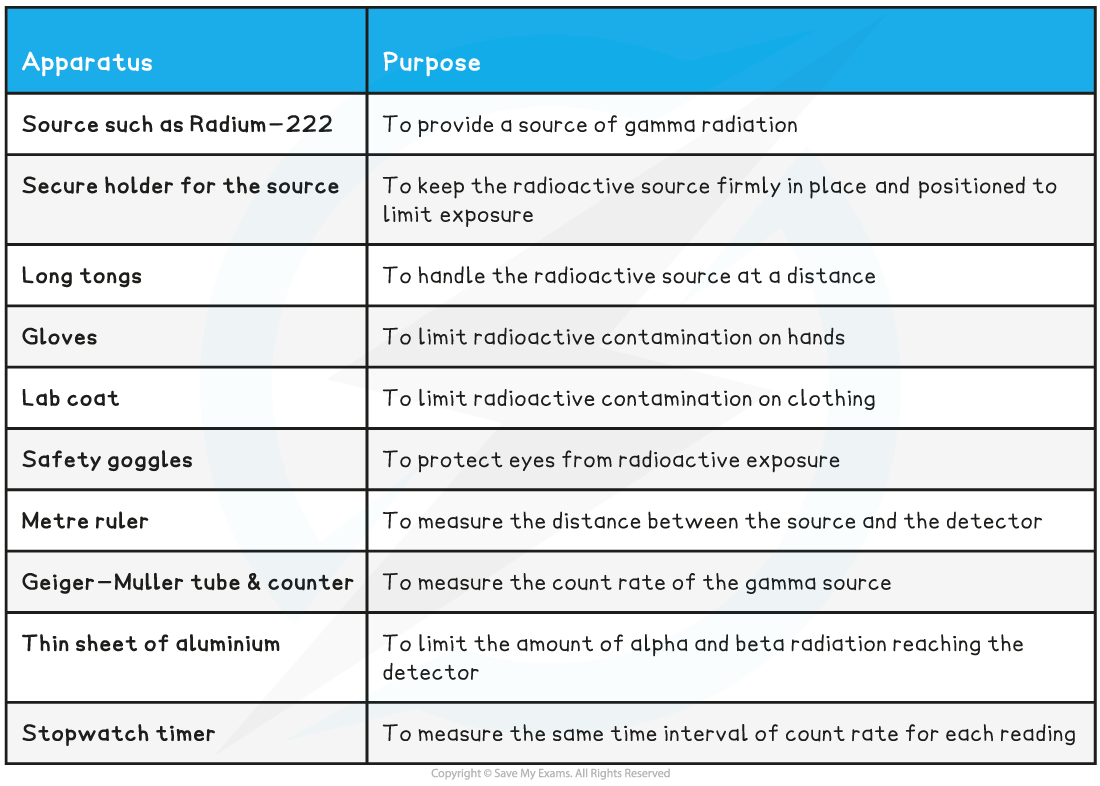
- Resolution of equipment:
- Metre ruler = 1 mm
- Stopwatch = 0.01 s
Method
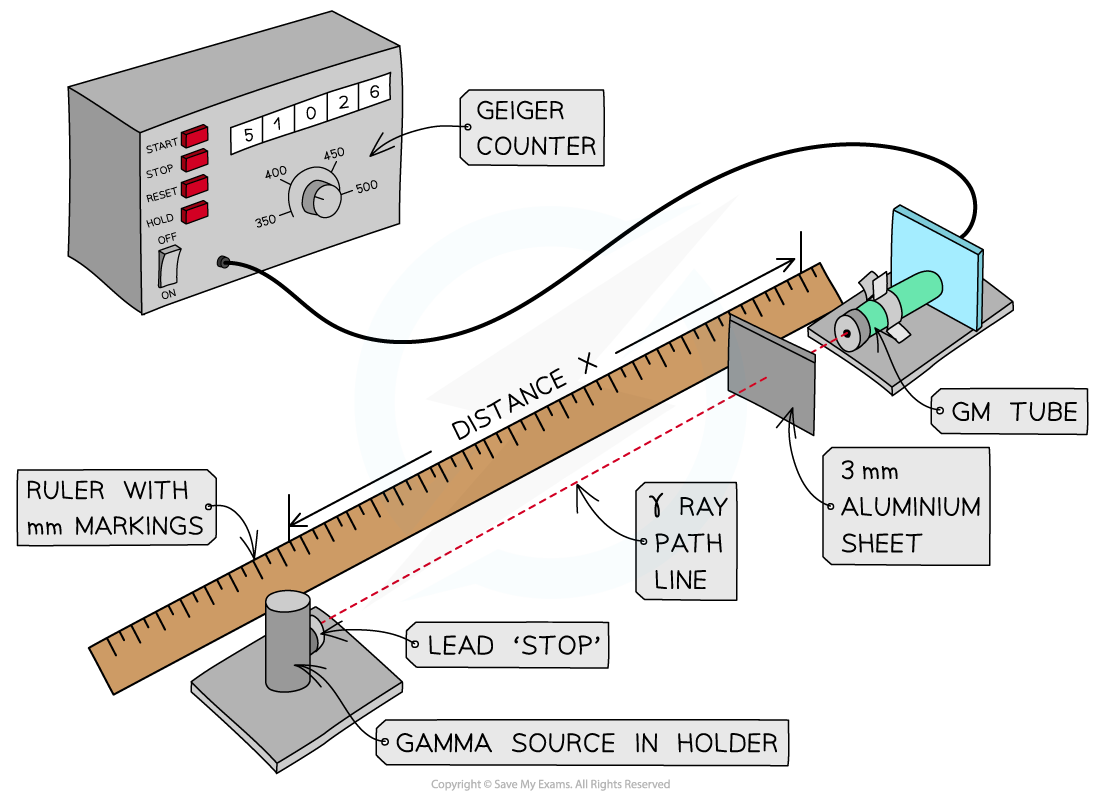
Set up for inverse-square law investigation
- Measure the background radiation using a Geiger Muller tube without the gamma source in the room, take several readings and find an average
- Next, put the gamma source at a set starting distance (e.g. 5 cm) from the GM tube and measure the number of counts in 60 seconds
- Record 3 measurements for each distance and take an average
- Repeat this for several distances going up in 5 cm intervals
- A suitable table of results might look like this:
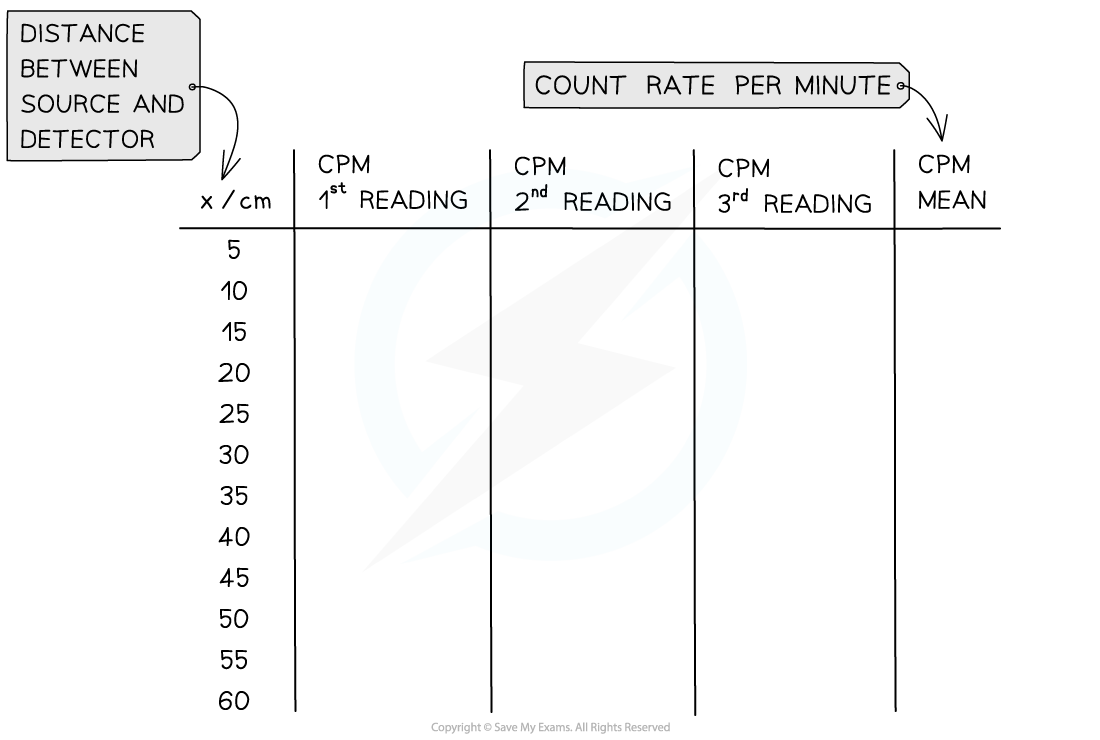
Analysing the Results
- According to the inverse square law, the intensity, I, of the γ radiation from a point source depends on the distance, x, from the source

- Intensity is proportional to the corrected count rate, C, so

- Comparing this to the equation of a straight line, y = mx
- y = C (counts min–1)
- x = 1/x2 (m–2)
- Gradient = constant, k
- Square each of the distances and subtract the background radiation from each count rate reading
- Plot a graph of the corrected count rate per minute against 1/x2
- If it is a straight line graph through the origin, this shows they are directly proportional, and the inverse square relationship is confirmed
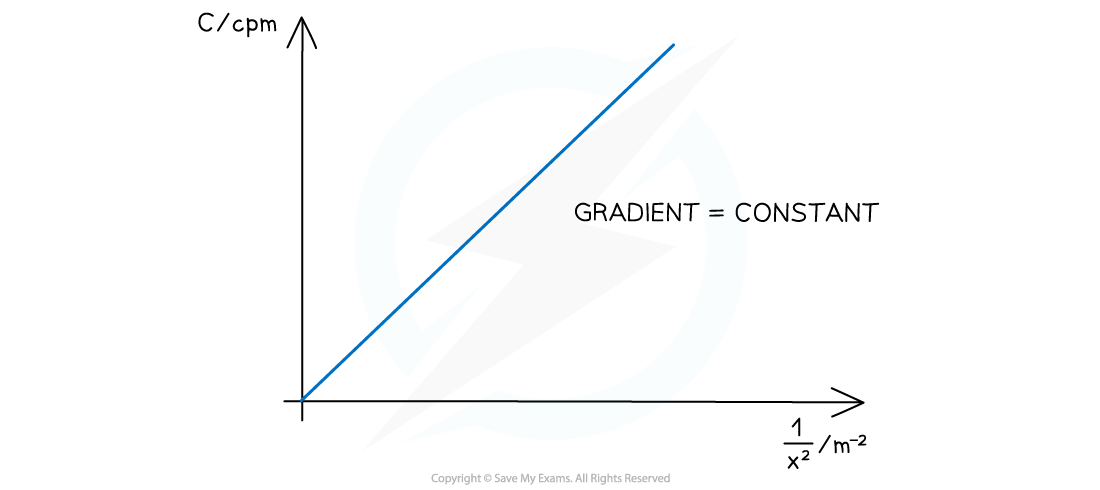
A straight-line graph verifies the inverse square relationship. The closer the points are to the line, the better the experiment has demonstrated the relationship
Evaluating the Experiment
Systematic errors:
- The Geiger counter may suffer from an issue called “dead time”
- This is when multiple counts happen simultaneously within ~100 μs and the counter only registers one
- This is a more common problem in older detectors, so using a more modern Geiger counter should reduce this problem
- The source may not be a pure gamma emitter
- To prevent any alpha or beta radiation being measured, the Geiger-Muller tube should be shielded with a sheet of 2–3 mm aluminium
Random errors:
- Radioactive decay is random, so repeat readings are vital in this experiment
- Measure the count over the longest time span possible
- A larger count helps reduce the statistical percentage uncertainty inherent in smaller readings
- This is because the percentage error is proportional to the inverse-square root of the count
Safety Considerations
- For the gamma source:
- Reduce the exposure time by keeping it in a lead-lined box when not in use
- Handle with long tongs
- Do not point the source at anyone and keep a large distance (as activity reduces by an inverse square law)
- Safety clothing such as a lab coat, gloves and goggles must be worn
Worked Example
A student measures the background radiation count in a laboratory and obtains the following readings: The student is trying to verify the inverse square law of gamma radiation on a sample of Radium-226. He collects the following data:
The student is trying to verify the inverse square law of gamma radiation on a sample of Radium-226. He collects the following data: Use this data to determine if the student’s data follows an inverse square law. Determine the uncertainty in the gradient of the graph.
Use this data to determine if the student’s data follows an inverse square law. Determine the uncertainty in the gradient of the graph.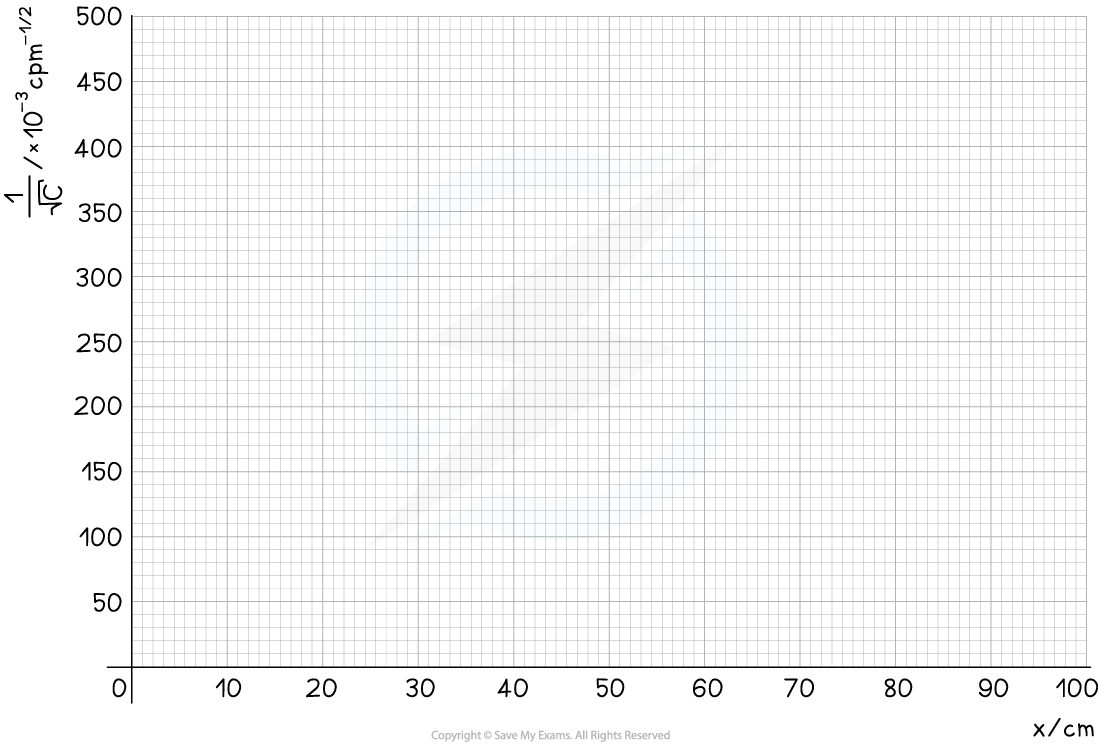
Step 1: Determine a mean value of background radiation

Step 2: Calculate C (corrected average count rate) and C–1/2
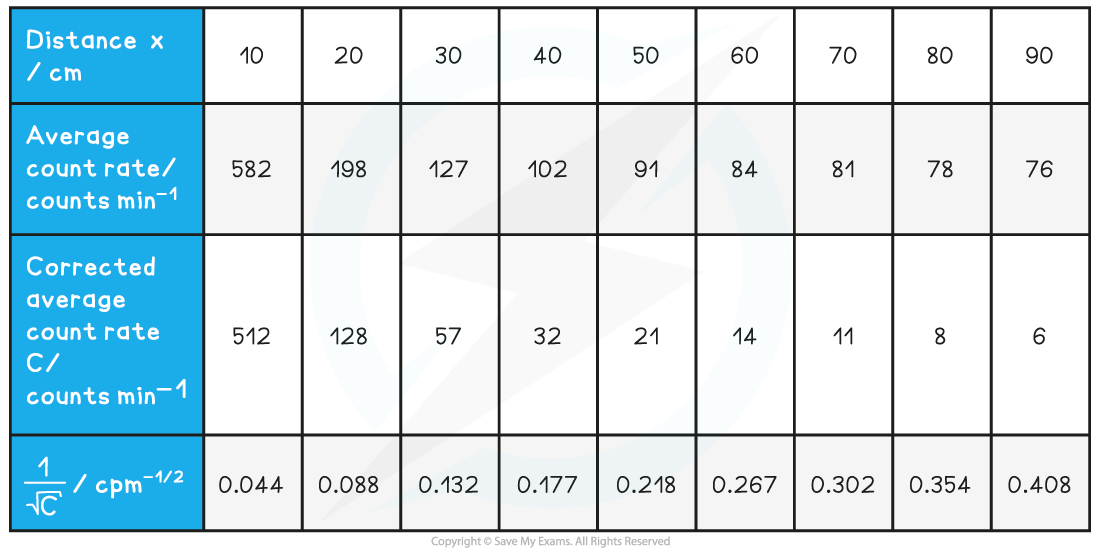
Step 3: Plot a graph of C–1/2 against x and draw a line of best fit
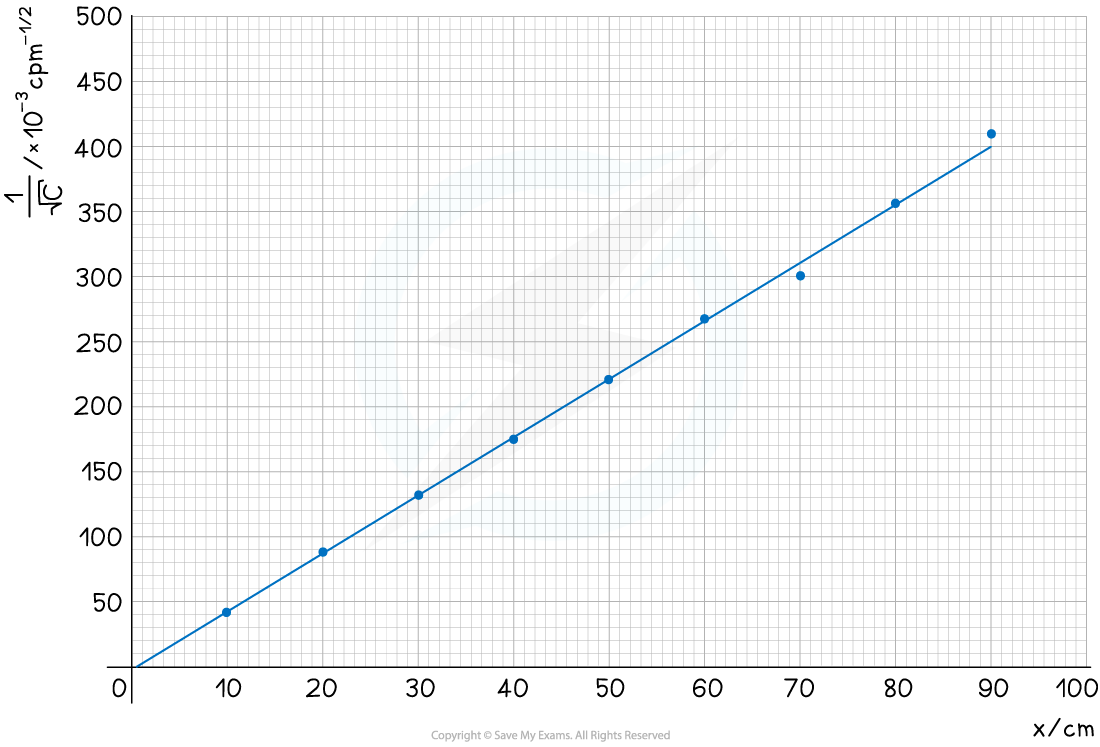
-
- The graph shows C–1/2 is directly proportional to x, therefore, the data follows an inverse square law
Step 4: Determine the uncertainties in the readings

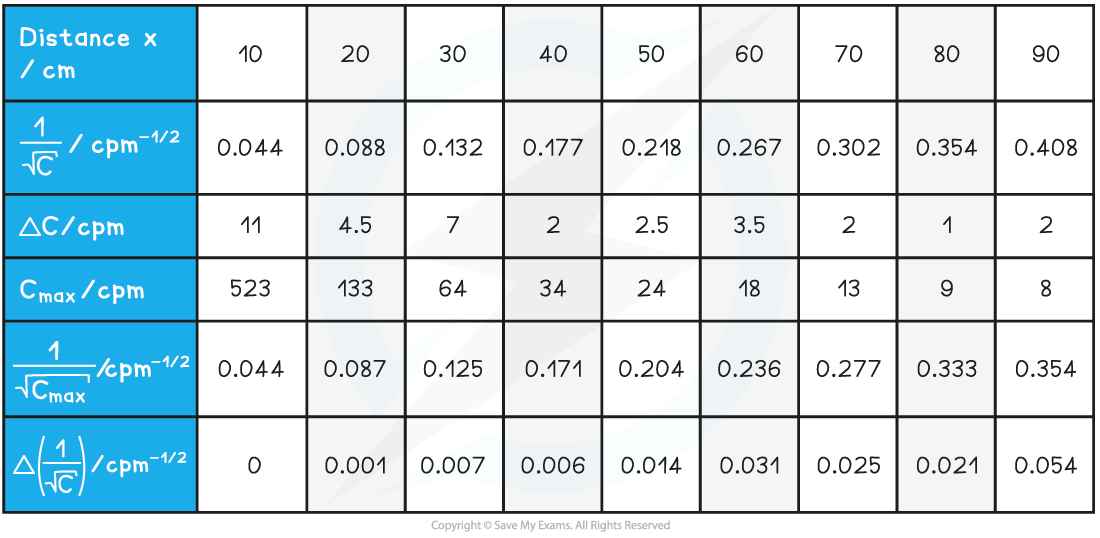
Step 5: Plot the error bars and draw a line of worst fit
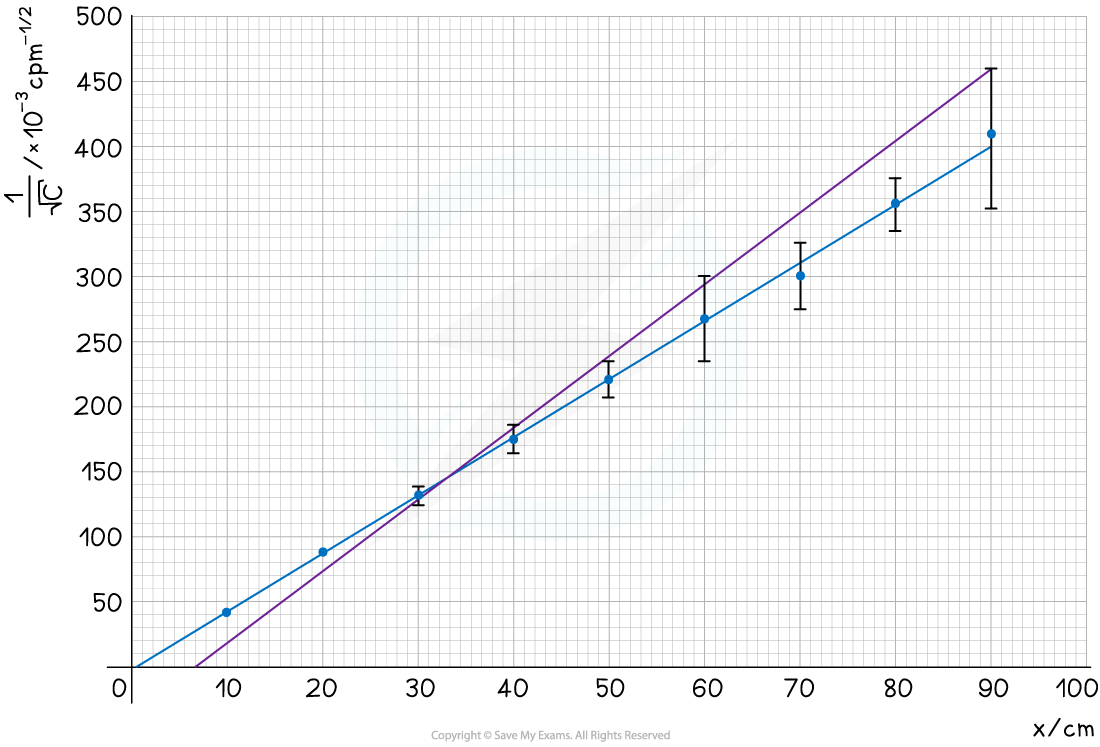
Step 6: Calculate the uncertainty in the gradient
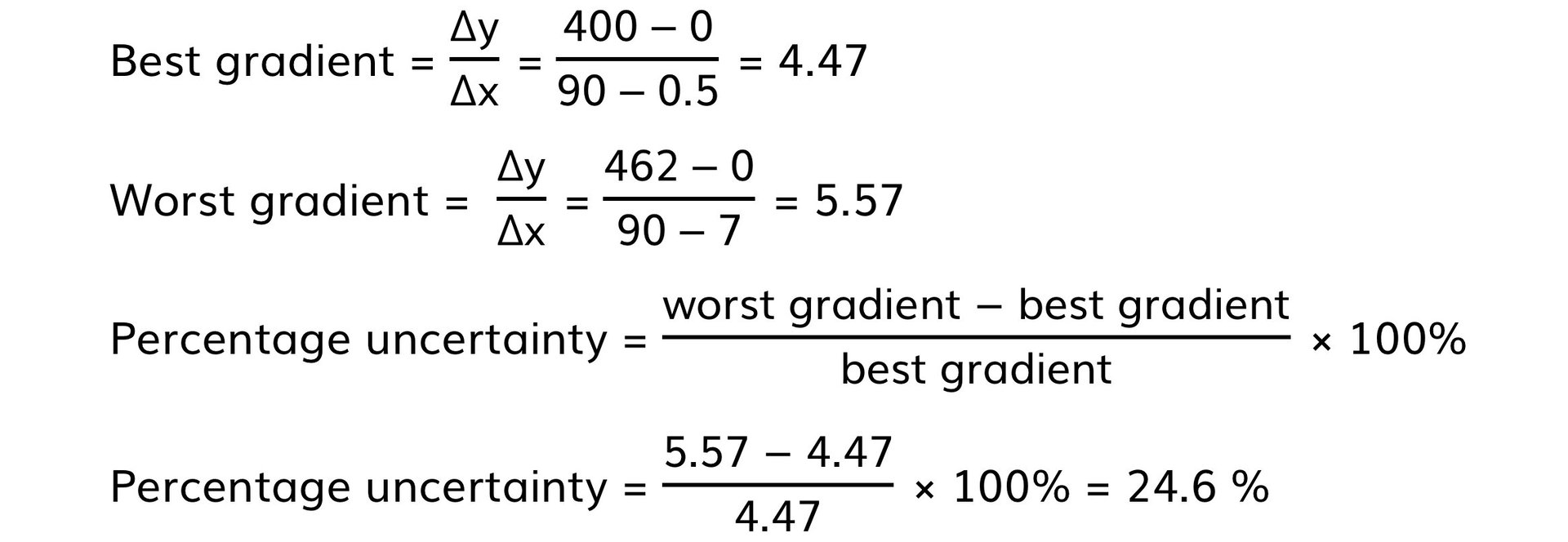
转载自savemyexams

最新发布
© 2026. All Rights Reserved. 沪ICP备2023009024号-1









